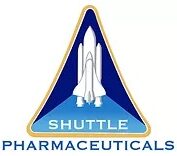Therapeutics
HDAC Inhibitors
HDAC Inhibitors
Inhibition of cancer cell growth with little effect on surrounding normal cells is the desired strategy for treatment of cancers.
HDACs are a class of enzymes that regulate gene expression through chemical modification of histones and non-histone proteins. Increased HDAC activity leads to a more condensed chromatin (which is a protein complex consisting of DNA and other proteins), decreased gene expression and loss of key gene products, including tumor suppressor gene function. Inhibition of HDAC activity leads to a more open chromatin and increased expression of the key gene products. This chromatin modification underlies the epigenetic cellular regulatory system and is an area of intense investigation.
Driving Next-Gen Cancer Therapy
Our research and development efforts to date have focused on the discovery of novel, dual functional molecules for potential use in cancer treatment as radiation sensitizers of cancers, protectors of normal tissues, and activators of the immune responses to antigens expressed by irradiated cancer cells.
We hold more than 20 composition of matter HDAC inhibitor patents in the U.S., Canada and Europe.
Expanding Precision Oncology
We have three lead candidates for potential development for the treatment of solid tumors, including breast cancer, lung cancer and multiple myeloma.
SP-2-225: a candidate lead of compounds demonstrating Class II (HDAC6) selective inhibition. HDAC6 is a molecule integral to the presentation of antigens by macrophages to T-lymphocytes.
SP-1-303: a candidate Class I HDAC inhibitor with preferential efficacy against ER positive cancers.
SP-1-161: a candidate lead of compounds demonstrating activation of the “ATM” gene product (mutated in Ataxia-Telangiectasia). Ataxia-Telangiectasia is a human genetic disease characterized by neurological, immunological and radiobiological clinical features.
